That Russia borrowed from the Tatars
Categories: History | Society | World
By Pictolic https://pictolic.com/article/that-russia-borrowed-from-the-tatars.htmlIt is not only the battle cry "hurrah!" the word "hero", fighting cavalry, clothing, postal stations, the drivers. But the government also learned for Russia from the Horde.
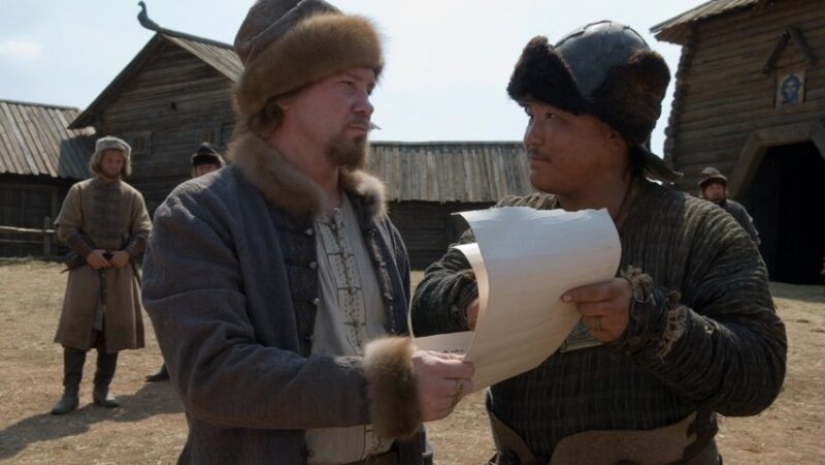
In the 13th century, the scattered principalities were attacked and subordinated to the biggest government in the history of mankind (ranging from 24 to 33 million sq km) — the Mongolian Empire created by Genghis Khan (1165-1227) and his descendants.
The invasion of the Mongols was for the Russian principalities into a nightmare. Hiking the Russian squad, little knowledge of the art of combat builds, and some fortified wooden city was crushed the best army in the world. It has been light and heavy cavalry, archers, heavy infantry, siege engines.
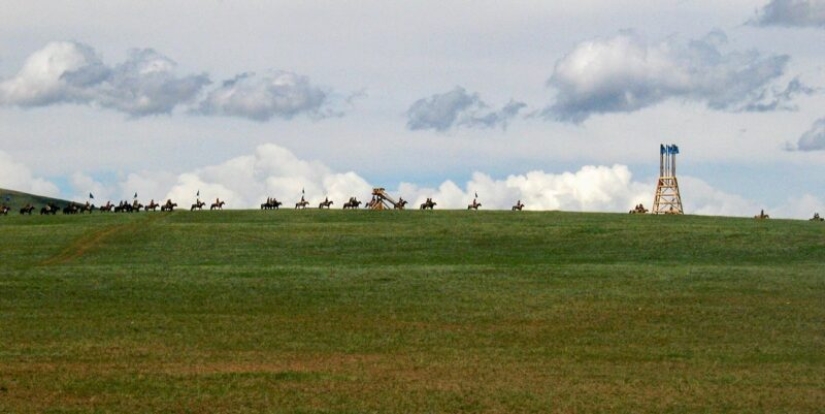
Mongol army on the March. Modern reconstruction
Soon after the conquest of Russia Mongol Empire collapsed and control of the Russian lands became the Golden Horde, the state, separated from the Mongol Empire. The Mongols wanted to conquer Russian lands — they merely collected tribute, and the Russian princes were forced to travel to the capital of the Golden Horde, to get there the labels are official documents confirming the right of princes to govern their own lands. It was an unheard-of humiliation for the proud Russian warriors — the humiliation was the first step to the formation of a unified Russian state.
All the subsequent military and political successes of the Moscow state in the international arena — by and large, a consequence of inadvertent "training" that the Russians were in the period of the Tartar dominion. List the most important things and phenomena, which the Russians borrowed from the Tatars.
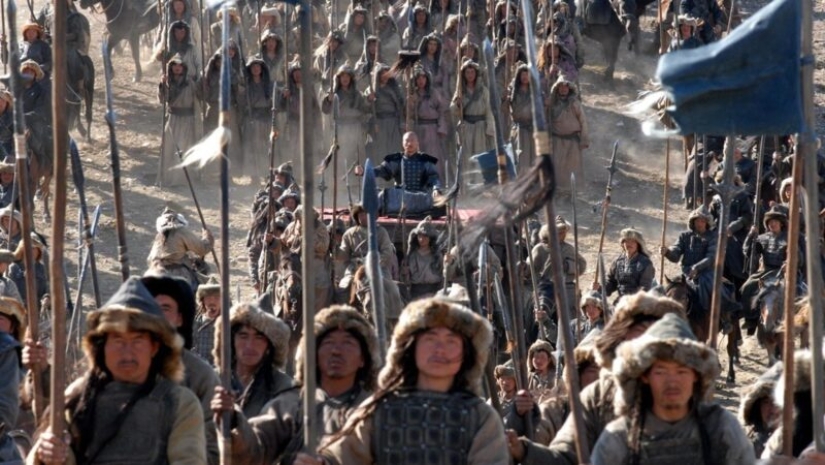
The Mongol warlord. Frame from the movie "Mongol" (2007)
Despite smaller numbers than the Mongols, the Russian squad and an army was strong and, most importantly, fearless — they were defending their native land. Offensive and defensive armament of the Russian troops was famous in Europe. But heavily armed combatants were few in number. They are well suited to reflect the short episodic attacks and protect cities.
When I had to confront systematically organized Mongol army, the bulk of the Russian forces amounted to an armed spears and axes militia. But the main reason for the defeat was not in it.
In addition, in the Russian tradition, the Prince was a pioneer of the fight. Now it looks absurd, but the princes surrounded by their warriors "climb" to fight in the front ranks, where the more numerous the enemy was surrounded and destroyed them. Squads and militia without a leader was demoralized.
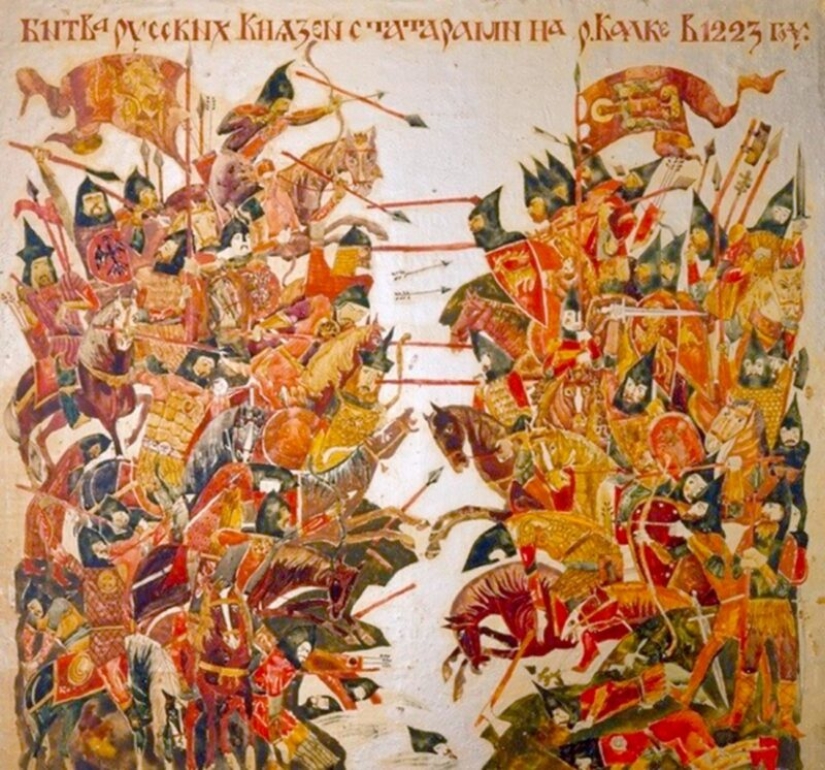
The battle of Kalka. Later a stylized image
The Mongols, it was different. The khans generally, as a rule, were not at the battle, and commanders temniki and thousanders, watching the battle from afar, from the heights, guiding his troops through the flags, smoke and light signals and with sounds of pipes and drums. In the case of military failures, not ordinary soldiers, namely the warlords bore the brunt of the responsibility to the khans.
Much had to learn Russian the Mongols, starting with the basics. For example, the Russian battle cry "Ura!" could be, according to the hypothesis, copied from the Mongol or Tatar: in Mongolian "uragshaa!" — "forward", and Tartar "ura" — "kill!" And the word "hero" is Turkic, meaning "brave, hero". Before the Mongol invasion of such people in Russia called "horobi", "heart of oak".
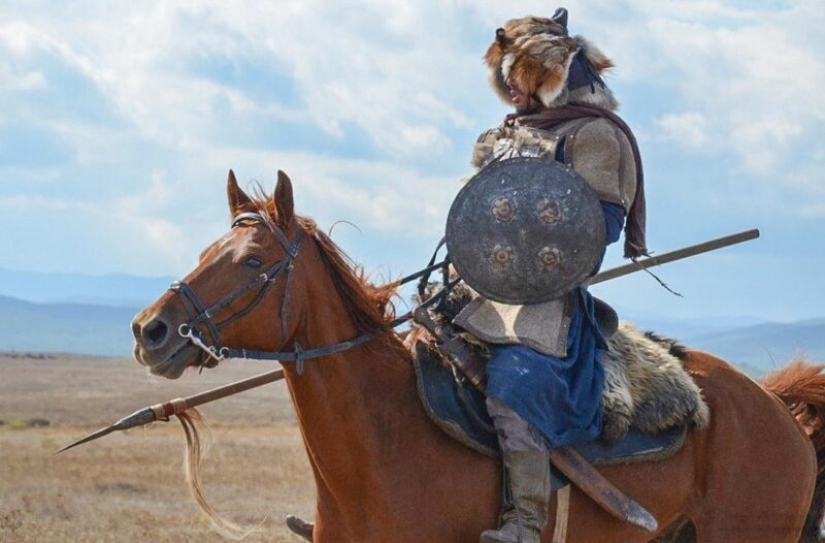
Mongolian horseman. Still from the TV series "the Golden Horde"
Before the beginning of the Mongol domination, the horse was an attribute of luxury. On a horse at the age of three imprisoned young Prince, following an ancient Indo-European tradition, initiation offspring of noble families. But after the Mongol cavalry has demonstrated its advantages in the battle with the Russians, conquered the people realized learn to create a cavalry formation. Lonely princes on horses, even clad in armor, could not withstand the regular horse regiments of Mongol-Tatars.
It is with the XIII—XIV CC. in Russia appear princely "stage root" and beginning to study professional warriors-the cavalry. They were the descendants of the princely warriors and belonged to a noble and wealthy birth, otherwise it was impossible to buy horses and corresponding to the status and functions of the cavalry clothing.
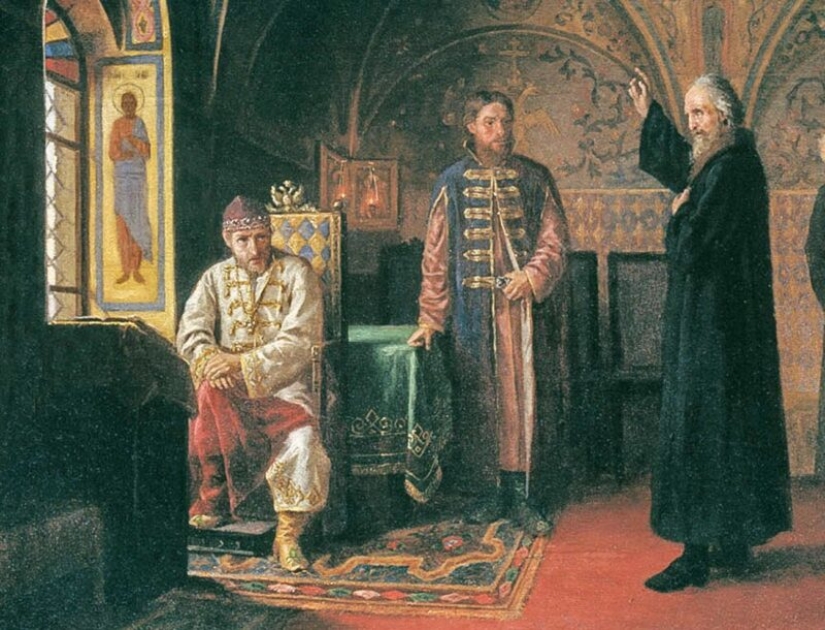
"Metropolitan Philip rebuked Ivan the terrible" (1800), the artist Jacob Turygin. Ivan the terrible is depicted in tafe
The ordinary male costume of the various tribes that inhabited the Russian lands before the Mongolian conquest consisted of ports and a shirt covered by a waist belt, fabric or leather. Outerwear were capes and cloaks, zavyazyvaetsya ropes. The status was shown richly decorated belts, the cost of the fabric of the coat and its color (most expensive color was considered a deeply blue Indigo).
For fast riding, especially in a combat situation, such clothing is not very suitable in flowing cloak will be cold at speed, it may wind around the head, covering the overview of the rider. The Mongols were pozaimstvovan coats — a dense, double-layered outerwear, which is fastened on hooks. You buttoned the top for heat to leave the hem undone for easy seat in the saddle.
So in the Russian language caught the "new" names usual clothes: hat, sash, pants, Shoe, Kumach (red), coat (woven coat no collar) and many others. Appeared direct borrowing — the Tatars were doing a special way with sheep and goat leather from the so — called saffiano leather, new for the Russian chic material; entered into tafia — like skullcap worn by noble Tartars, and from them this custom was adopted by Russians.
Tofu in the home liked to wear Ivan the terrible, brushy the head completely, as did the Tatar khans. And all of dress and casual clothing of the Russian tsars, their ceremonial coats and coats, adorned with gold and precious stones that we see in many portraits of the first Romanovs, was created with an eye on the vestments of the Mongol and Tartar rulers.
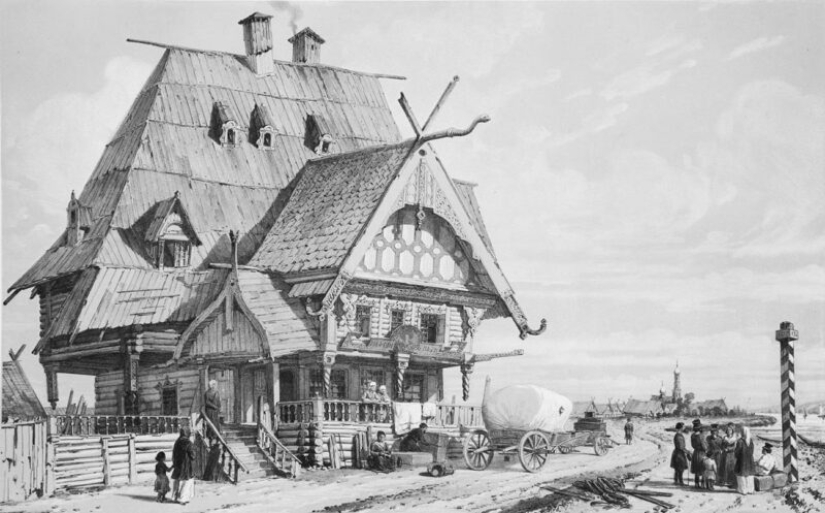
View of the tavern and post station on the road from Kostroma to Yaroslavl, 1839
To manage its huge territory Genghis Khan (or his descendants) have created a system of yams — points, where runners are moving on horseback across vast distances, could find fresh, not herded horses, to replace them and continue their journey without major delays.
Mongolian soldiers actually grew up in the saddle adult Mongols were trained to hold a horse for more than two days without a break. After the subjugation of the Russian lands, the pits were organized on the Russian territory. The local population has to bear the "horse duty" — it had to keep on yamskie stations on duty, to maintain order in the cart and put fresh horses.
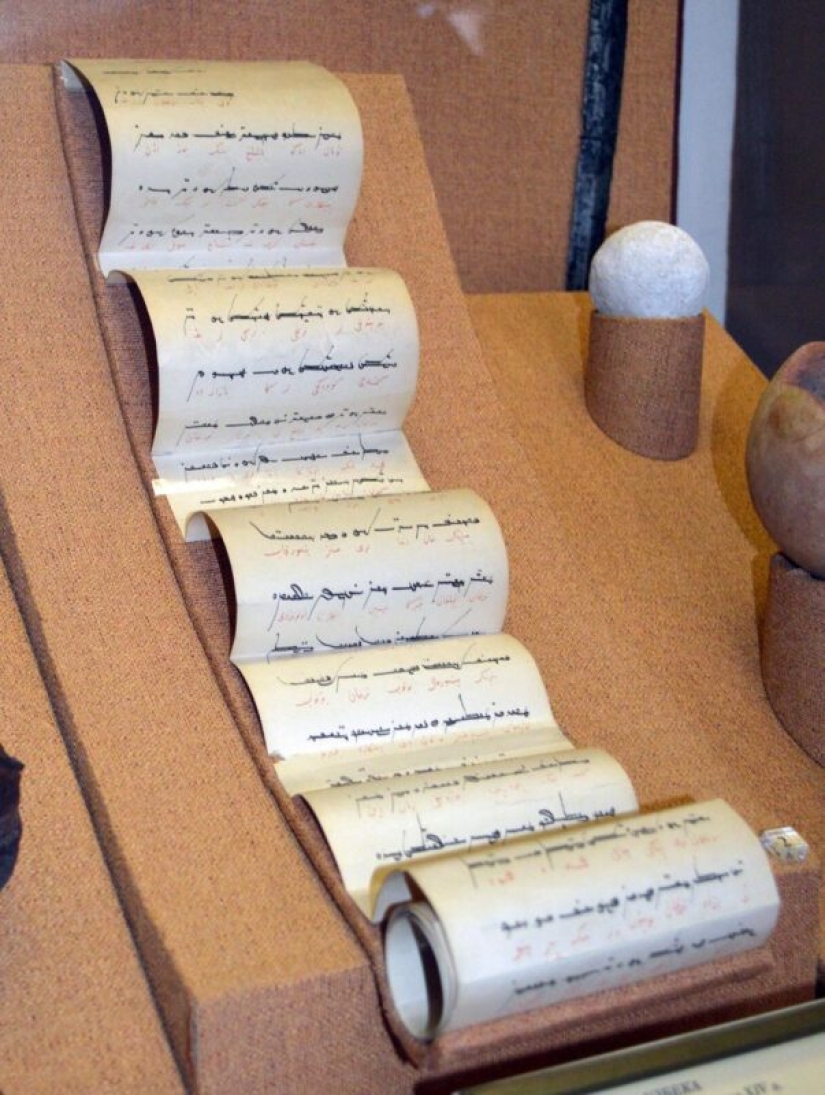
One of the Mongolian shortcuts 14-15 centuries.
The Mongol-Tatar invasion ended Veche orders in Russia. The Mongols were comfortable to Rus continued to be controlled solely by the princes — but only with them, the Mongols, the sanctions. They skillfully face the princes among themselves — so you cannot talk about some natural "fragmentation" of the Russian lands, because they are forcibly prevented to unite. In a few decades the princes realized what was happening, and began to try to unite the land around a single center, which eventually became Moscow.
The Mongols took over and the mechanics of their type of management — the official documents confirming rights of the princes and of the monasteries to rule over lands and lived on them farmers, monetary and customs system (the word "money" comes from Turkic "tenge" — "coin" and "customs" is from the Turkic damya — "seal, stamp"), the inheritance of authority, the centralized registration of troops and generals, civil and military administration — the impact of the Mongol orders of magnitude in the Russian system of government was comprehensive.
Most importantly — if, before the arrival of the Tatars Russian land was ruled by a host of princes, and the issues were resolved collectively, in 1480-m, at the time of the victory over the Horde's rule in Russia was the sole sovereign, has not been equal — Grand Duke of Moscow, at the time of Ivan III Vasilievich. It saved Russia — and was the beginning of a new era in its history.
Keywords: Mongolia | Russia | The Tatars | Genghis Khan
Post News ArticleRecent articles

American actress and model Catherine Bach is considered by many to be the true embodiment of the 70s. The curvaceous beauty loved ...

Watch a selection of rare archival footage of the XX century stars posing with their moms. Looked like her Marilyn Monroe, ...
Related articles

The first wedding night in Russia was arranged in a special way and had a lot of differences from the similar tradition of other ...

Those who have left their mark in the history of cinema, about those about whom I remember with fondness, love and admiration, ...

Do you think that the Eiffel Tower is a business card exclusively of the French capital? And here it is not! In the domestic ...

Not so long ago we had a post about color photographs of Italy in 1938 (see the link below). An endless series of banners, ...